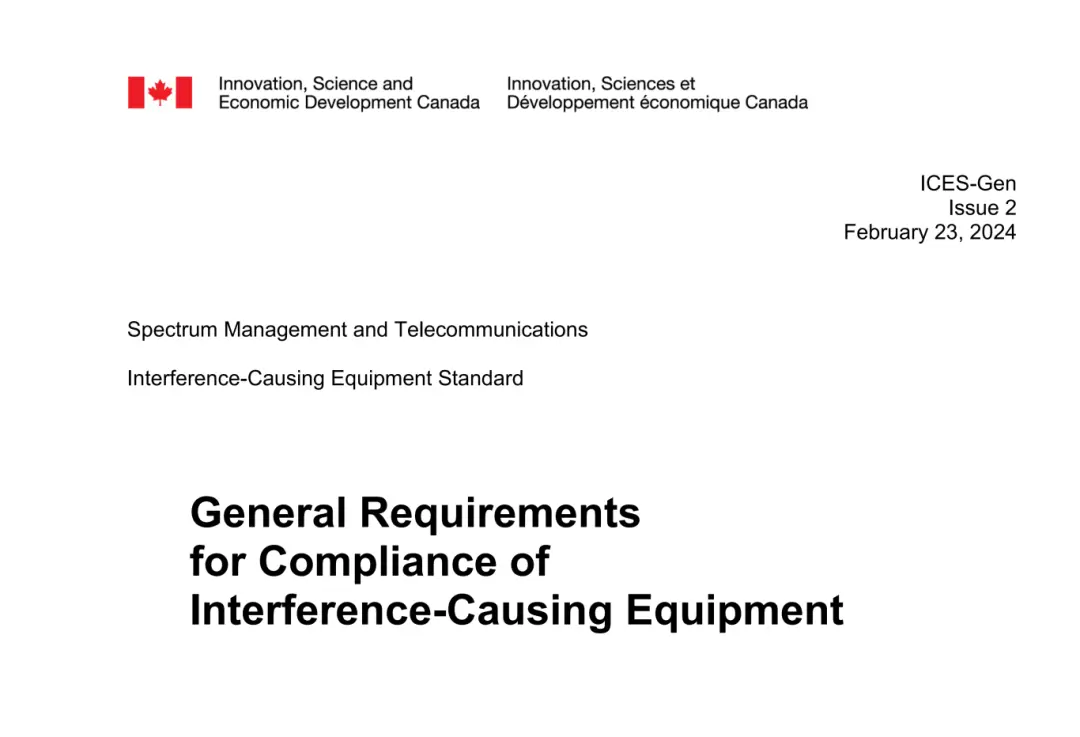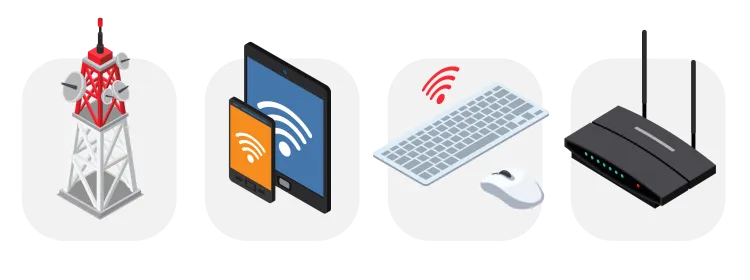
Canada IC SDoC Label New Requirements
On February 23, 2024, Innovation, Science and EconoMIC Development Canada (ised) released version 2 of ICES-GEN "General Requirements for Compliance of Interference-Causing Equipment." This version replaces ICES-GEN Issue 1 and includes updated requirements and definitions, QR code labels, and simplified ISED labels.

The transition period for this version is one year. Starting February 23, 2025, ISED will require the use of the new version labels. China JJR Laboratory has completed the report updates and introduced new IC sdoc label instructions.
At this stage, both the new and old labels can be used. JJR recommends that relevant sellers start using the new labels now.
ISED Label Compliance Interpretation
The label must include the word "Canada" or "CAN" and indicate the interference equipment standards in both English and French. If the applicable ICES standard distinguishes between Class A and Class B equipment, the label must also indicate the equipment class (A or B).
For example:
CAN ICES (A) / NMB (A)
Category Marking Conditions
The category only needs to be indicated on the label if the applicable ICES standard distinguishes between Class A and Class B equipment. If no such distinction exists, the label can be simplified as follows:
CAN ICES / NMB
General Labeling
The new standard allows the use of a general label without referencing specific ICES standard numbers. This means that products previously labeled in compliance with the old standard do not need to be relabeled, as these labels meet the requirements of the new standard.
※ The following are examples of labels that comply with the old standards and still meet the new requirements, so they will not need to be changed after the transition period ends:
CAN ICES-3(B)/NMB-3(B)
Canada ICES-005 (A) / NMB-005 (A)
CAN ICES-002 / NMB-002
IC/ISED/ICES Certification
IC stands for Industry Canada, now known as ISED (Innovation, Science, and Economic Development Canada). IC sets standards for testing analog and digital terminal equipment and requires wireless products sold in Canada to be IC certified (ISED/ICES certification).
ic certification includes electromagnetic compatibility and radio frequency testing requirements for wireless and non-wireless products. It is a mandatory condition for electronic and electrical products to enter the Canadian market. Applicable products include broadcast equipment, information technology equipment, radio devices, and telecommunications equipment.

ICES-GEN Issue 2 original text link:
https://ised-isde.canada.ca/site/spectrum-management-telecommunications/en/devices-and-equipment/interference-causing-equipment-standards-ices/ices-gen-general-requirements-compliance-interference-causing-equipment
Email:hello@jjrlab.com
Write your message here and send it to us
 What Are the Testing Items of California Propositi
What Are the Testing Items of California Propositi
 E-Cigarette EU TPD Testing
E-Cigarette EU TPD Testing
 Testing Certification for E-cigarettes Exported to
Testing Certification for E-cigarettes Exported to
 What is Amazon US CPC Certification?
What is Amazon US CPC Certification?
 UK Toy Safety Regulation Standard EN 71-13
UK Toy Safety Regulation Standard EN 71-13
 What is EU UFI Registration?
What is EU UFI Registration?
 EU UFI Registration for E-cigarette E-liquid
EU UFI Registration for E-cigarette E-liquid
 How to get the MSDS Report for Electronic Cigarett
How to get the MSDS Report for Electronic Cigarett
Leave us a message
24-hour online customer service at any time to respond, so that you worry!




